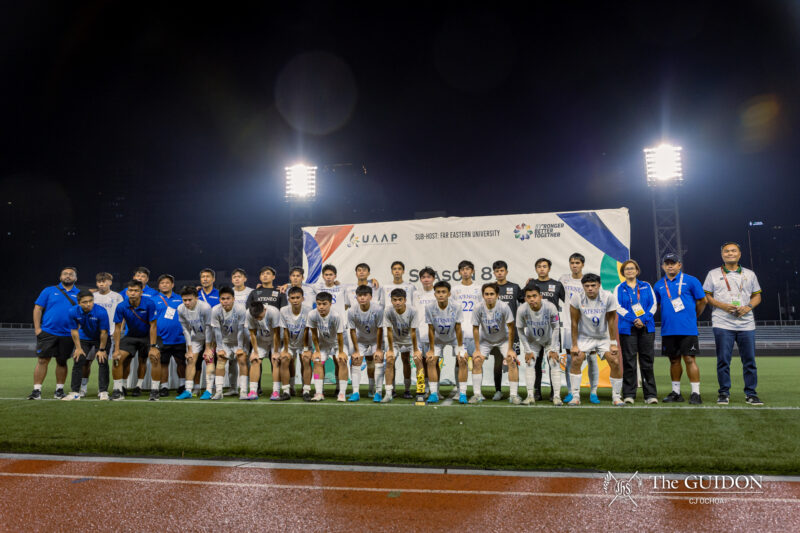THE ADVENT of COVID-19 overwhelmed the nation’s transport sector, with lockdown restrictions forcing public utility vehicle (PUV) drivers and service operators to search for alternative income sources. Commuters were then directly affected by reduced transport supply as cost inflation exacerbated the inaccessibility of trips.
Almost three years later, it has only become more apparent that the design of Philippine public transport—as measured by traveling experiences in the post-COVID landscape—is outdated. Weighed down by crowded facilities, long queues, and rising fares, the system remains in dire need of a demand-responsive and sustainable revamp. As such, the accelerated return to the city hustle and bustle amid these inefficiencies today raises the question of whether the vision of equitable mass transit can be realized in the new normal.
Acute symptoms
At the height of the pandemic, government efforts to bolster the resilience of public transport ranged from health protocols to fare-free transit to a service contracting program. However, these decisions had to contend with a dominant car-centric culture and a myriad of logistical challenges, which hindered sustainable change at large.
For instance, social distancing guidelines such as limited rider capacity rendered transport operators unable to sustain pre-pandemic levels of revenue and demand. As such, transport economist and Move As One Coalition Co-Convenor Robert Siy amplified the call for proactive measures that protect both public transport operators and commuters.
He also explained that passengers need reliable and predictable public transit, which can be achieved by insulating public transport operators “from the variability in revenue and passenger numbers.”
Attempts to fulfill that need took shape in the service contracting program under the Bayanihan to Recover As One Act. Initially targeting 60,000 drivers, the policy offered both gross cost and net cost service contracting to cushion the impact of sustained operating costs amid lower vehicular capacity.
However, late or no payouts, delayed subsidies for drivers’ smartphones, and inaccurate data monitoring methods continue to plague the program’s execution and threaten its sustainability.
Nicole Cobarrubias, a sustainable transport advocate at AltMobility PH and Move As One Coalition stated, “I think it’s good that the government started to recognize [service contracting], but… it’s not really felt on the ground.”
Additionally, Siy warned against enacting fare-free trips carelessly, which could lead to increased financial risks. He stated that paying for reliable services from transport service providers, alternative revenue sources such as advertising, funds from traffic violation fines, and land value capture are all successful in other countries.
Contextual mirroring
Urban mobility trends in Southeast Asia (SEA) countries reveal how growing populations and rapid urbanization directly impact mobility levels. Rapid global population growth is often accompanied by demands for diverse transportation.
However, while transportation infrastructure continuously develops, it fails to sustainably address public transport demands, such as safer roads and timely arrivals for commuters.
As the region attempts to recover from the impact of the COVID-19 pandemic on the transportation sector, several SEA countries have shown progress toward achieving sustainable urban mobility.
To alleviate traffic congestion and carbon emissions, Singapore discourages owning more cars by requiring citizens to have a Certificate of Entitlement, which represents their right to vehicle ownership, and to pay yearly road taxes.
Additionally, Jakarta’s TransJakarta, the first bus rapid transit in SEA, has successfully integrated with bus and paratransit operators to expand transportation options, which resulted in Jakarta citizens being more reliant on public transport.
Analyzing these international transportation trends highlights the need for the Philippines’ institutional framework to encourage decentralized agencies and flexible transportation options.
According to Siy, this can be realized by creating metropolitan transport agencies and integrating a holistic approach to multi-modal transportation. Ultimately, ensuring efficient and sustainable urban transit trends requires proactive risk management and consistent stakeholder involvement in transportation discussions.
The road ahead
The experiences of public transport drivers and commuters with long waiting times, rising oil prices, and traffic congestion underscore the need for feasible transport modifications to be implemented in the Philippines.
Communication, both in traditional and social media, is needed to convey the urgency of addressing transit challenges. In this regard, Siy stated that both local and national officials can have a better grasp of the root problems of the Philippines’ transit system when media platforms showcase the experience of today’s commuters.
Multi-sectoral collaboration is also necessary to identify and address the pain points of the transit sector. In particular, consultations between the transportation industry and stakeholders, such as civil society and the government, can foster a safe environment for active participation, feedback, and dialogue. According to Siy, through such creation of multi-sector advisory committees, people would be able to develop a common direction and perspective.
In the end, this common perspective should shift the sectors’ focus away from vehicle-oriented approaches to ones that put individuals at the center. Ultimately, vehicle-oriented approaches focus on the rapid construction of non-sustainable infrastructure, which leads to more traffic congestion. However, to break this cycle, sustainable mobility must be realized and maintained.
“Wherever you have roads or infrastructure, the objective should be to facilitate the movement of people, rather than vehicles,” Siy stated. By prioritizing pedestrians, cyclists, and public transport, the Philippines’ existing roadways will be utilized more efficiently.




